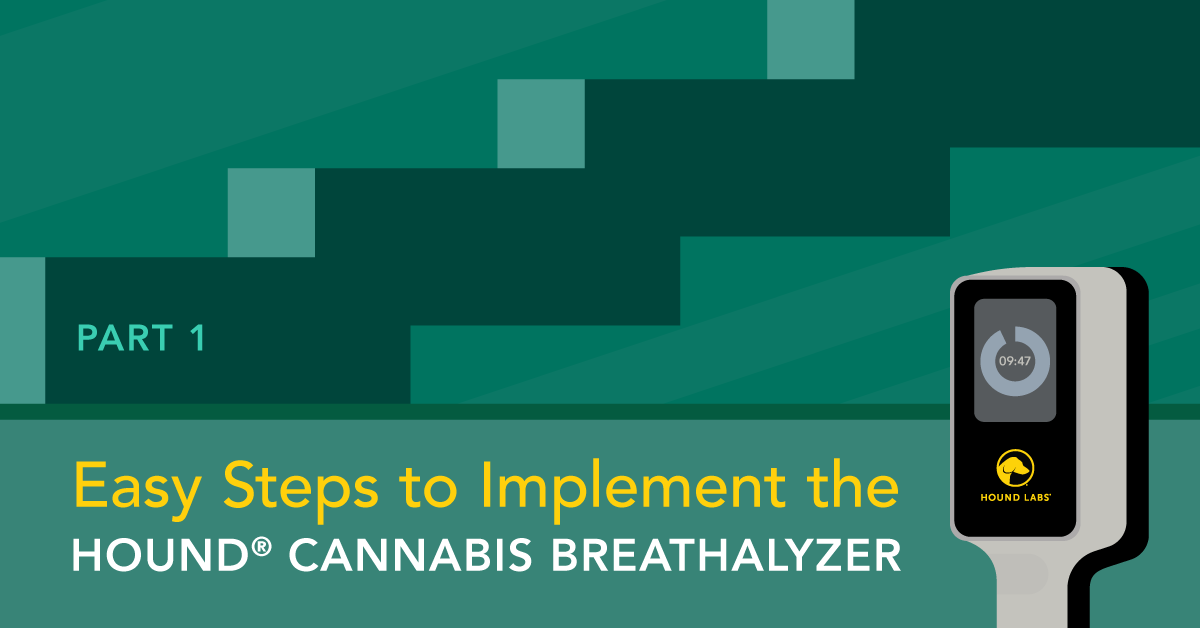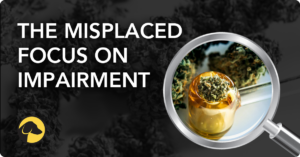
Part One: Easy Steps to Implement the HOUND® CANNABIS BREATHALYZER
In my role at Hound Labs, Inc., I spend a lot of time talking with employers and partners about solving the challenges of cannabis testing in the workplace. By now, many of them have heard about our cannabis breathalyzer and are eager to implement our solution – a fast, instrument-read, technologically-advanced cannabis test that’s fair for employees. With this test on the horizon, many of our discussions now revolve around how employers should implement our cannabis breath test.
In other words, they understand what our solution does, but they need some guidance on how to update their drug testing policy to mesh with this new technology. My sense is other organizations could use an easy-to-follow guide as well. So, I’ve compiled five steps to help any business get ready to implement the HOUND® CANNABIS BREATHALYZER. In Part One of my two-part blog series, I’ll cover common reasons for testing and when you may need the assistance of other experts.
1. CONSIDER WHEN TO TEST
Employers are in a tough spot when it comes to drug testing candidates and employees for cannabis. Traditional tests like urine and oral fluid can detect cannabis for days and even weeks after use. If an employee fails a test due to past use, employers are left at risk for lawsuits and production downtime, not to mention the cost of replacing the position.
With more and more candidates and employees failing to pass traditional cannabis tests, companies simply can’t fill the recruiting funnel with enough qualified applicants. The answer for companies in the era of cannabis legalization is a test for recent cannabis use, which serves as the best measure to determine if an employee’s use and corresponding test results comply with company workday policies.
By isolating recent use, cannabis breath testing can help employers in a variety of drug testing scenarios. Employers are looking to leverage this testing method throughout their programs by applying it to these seven reasons for testing:
- Random
- Pre-Access
- Pre-Employment
- Post-Incident
- Reasonable Suspicion
- Return-to-Duty
- Follow-Up
When we talk to employers about implementing a recent use breath test, they are starting to view it holistically. Certainly, employers want to detect recent use in a post-incident or reasonable suspicion situation. They also want to include it in a post-hire program, alongside their random program with other sample types or even by itself, performing a test post-hire within 60 days of an employee starting at the company.
Determining which way to apply recent use testing is a matter of each company’s vision for promoting fair drug testing policies within its employee population. I encourage employers and partners we work with to take a step back and look at the goals of their drug testing program in its entirety when making these decisions – there is no one size fits all.
2. CONNECT WITH YOUR MEDICAL REVIEW OFFICER
A Medical Review Officer (MRO) is a licensed physician who is trained to review, certify, and validate drug testing lab results. They can play a critical role in helping employers navigate workplace drug testing policies and protect employees’ personal health information. MROs may help employers create flexible drug testing programs that address the majority but can still accommodate specific situations.
MROs are a valuable resource to help employers create effective drug testing programs that achieve the goal of balancing workplace safety and employee privacy in an increasingly complex environment, further complicated by the legalization of cannabis. Employers may discover that involving an MRO, in addition to working with their legal counsel, will result in the most effective drug testing programs for both employers and employees.
Any time employers are considering adding another testing tool to their drug testing program, and the Hound® solution is no exception, they should consult with their MRO. If you need help finding an MRO, contact us and we can help point you to MROs in our industry.
AVAILABLE NOW
Check out part two of the series here. If you have questions in the meantime, connect with my team for assistance.

August 18, 2022
By SAMMIE DABBS
Chief Revenue Officer
Share











